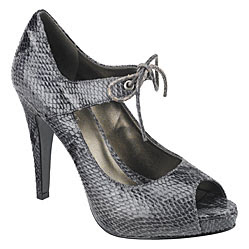Understanding how one can build strength in ballet class, stretch safely, and get the core muscles correctly applying classical ballet technique, enhances the amazing potential you have to enjoy and effect health and weight loss or gain. Every ballerina has done the same things you can do in ballet, to progress as far as your physique and dedication will allow. Ballet is a full body workout, but some aspects of technique are commonly not presented with clarity as to what the anatomical factors are.
Easy learning is possible if you have a little extra time. Without having to study like a kinesiologist, you can learn what a muscle is and how to get the best use out of it. Correct skeletal placement and flexibility are needed to develop the core muscles that lead to the elegance of a ballerina and the precise professional footwork of a male virtuoso.
Muscles have certain behaviors. They can stretch long, like an elastic. With repetition and patience, the muscle will shrink back a little less. On the subject of stretching, it's good to be warmed up because collagen, in your connective tissues, becomes more fluid when you are warmed up and allows more movement in your body.
Stretching a muscle requires knowing the correct position to stretch it in.
For instance, stretching the hamstrings, the long muscles running from the sits bones to below your knee, requires that you stand correctly with one leg in second on the barre, the kitchen counter, or whatever you've got as a support. Or, you can sit on the floor in your widest comfortable second position, with your pelvis in neutral, as though you were standing.
If standing, your posture must be as correct as possible. Spine neutral and elongated by the lengthening support of the abdominal and spinal muscles, turnout held in the deep rotators, and the gluteals or butt muscles not over-supporting, allowing your hip bone and pelvis of the working side to relax down. This way you will do a side bend towards your working leg, or a demi plie remaining straight in the spine, and if you maintain your placement, the hamstring will begin to stretch like a piece of elastic.
That's just one example, you could be in a devant position, or an arabesque position. Once you reach your maximum stretch, before you get to a point of pain, you can hold that stretch for up to 90 seconds. During that time, you'll feel the muscle (and other muscles that are also getting a stretch), let go a little, and a little more, and then relax into the stretch fully. Every dancer has a different point in the stretch time where they will feel it's time to return to the initial position. At some point, the muscle will start pulling back, and that's the time to stop.
Bouncing doesn't help, although after your first stretch is over, you don't have to return to your initial position. You can release out of the stretch and go into it again. It requires some almost meditational attention to sense when you're doing too much, as opposed to pushing to the sharp pain signal that you get from being too demanding of your muscles.
Sore muscles come from tiny tears in the muscle fibers. A hot soak followed by icing, good nutrition and sufficient water intake helps your body recover and maintain a muscle that responds quickly to your brain, and has the strength to do what you want it to do.
Muscle spasms must be attended to with massage or use of a rubber ball, to work them out. Lactic acids remaining in the muscles create chemical damage. Massage and ice stimulate the circulation needed to carry away the lactic acid and other waste products in the muscles tissue.
So - in relation to the correct use and build up of strength in the core muscles, you must have correct placement. If you don't have correct placement, you stretch until you do. Then you are in the ballet positions required to work anatomically correctly. It is a process, longer for late starters in ballet, but still with potential.
Ballet and the people who do it are amazing. Whether you are a ballerina, a late starter, or a pre-professional, understanding something as simple as a muscle, and how to take care of it gets you the most out of your full body ballet workout. For a career builder, to lose weight, gain muscle or "just" to dance, keep being amazing!



















 budget...if you have one like me. I stumbled across pictures of Tracee Ellis Ross from Girlfriends. If I had to channel one particular character or person for whom I love all their clothes, it would definitely be Joan from Girlfriends. The mix of Boho Chic and classic styles are the only reasons I watched the show. Often I would watch the show on mute purely so I can check out the
budget...if you have one like me. I stumbled across pictures of Tracee Ellis Ross from Girlfriends. If I had to channel one particular character or person for whom I love all their clothes, it would definitely be Joan from Girlfriends. The mix of Boho Chic and classic styles are the only reasons I watched the show. Often I would watch the show on mute purely so I can check out the 


































